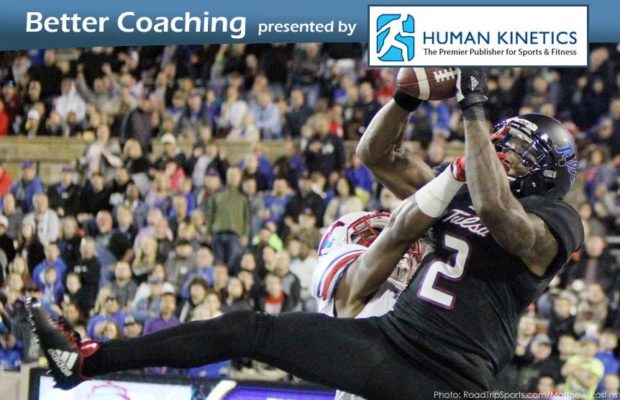The 40-Yard Dash: The Biggest Myth About Potential NFL Success?

The 40-yard dash may be considered the marquee event at the NFL’s annual Scouting Combine, but an athlete’s time doesn’t always indicate his potential for football stardom. That’s because in nearly every sport, not just football, the ability to quickly change direction is the real difference between success and failure. According to the National Strength and Conditioning Association’s book, Developing Agility and Quickness (Human Kinetics, 2011), the only way for athletes to maximize performance and bridge the gap between practice and competition is for training programs to address both the physical and cognitive components of agility and quickness.
Athletes who move faster than their opponents have an advantage. But as pointed out by Mark Roozen and David N. Suprak, two of the NSCA’s 17 leading experts featured in Developing Agility and Quickness, speed is measured by linear sprinting over a 40- to 100-yard distance. In most team sports, such as football, basketball, and soccer, athletes rarely sprint more than 30 yards in a straight line before they make a directional change.
“Unless an athlete is a 100-meter sprinter, focusing a great deal of time and attention on straight-ahead speed may not result in optimal performance,” comments Roozen.
Read the original article posted in AFCA Weekly.
Those team sports are characterized by rapid acceleration, deceleration, and changes of direction within a 10-yard window. Court sports, like tennis and volleyball, also require multidirectional first-step quickness and changes of direction within a 4- to 10-meter span. The reality is that in most sports, with the exception of track-and-field sprinting, changing direction quickly is far more important than great straight-line sprinting speed. For this reason, coaches and athletes should be more interested in finding effective ways to improve the complex sporting skills of agility and quickness. Athletes must both move and think fast to achieve lightning-fast quickness on the field or on the court.
“Most sports involve short sprints and rapid changes of direction, followed by rapid accelerations,” says Roozen. “It makes little sense to focus a large portion of training time on improving speed capabilities for athletes who will rarely reach maximum speed in competition.”
He and Suprak believe it makes more sense for those athletes to focus their attention on training to accelerate. Acceleration is the rate of change in velocity, so this phase of sprinting is critical for changing directions as rapidly and efficiently as possible.
Applicable to almost every sport, Developing Agility and Quickness focuses on improving athletes’ fleetness of foot, change-of-direction speed, and reaction time. It’s packed with more than 100 drills to help in the development of agility and quickness training programs. For more information, see Developing Agility and Quickness.